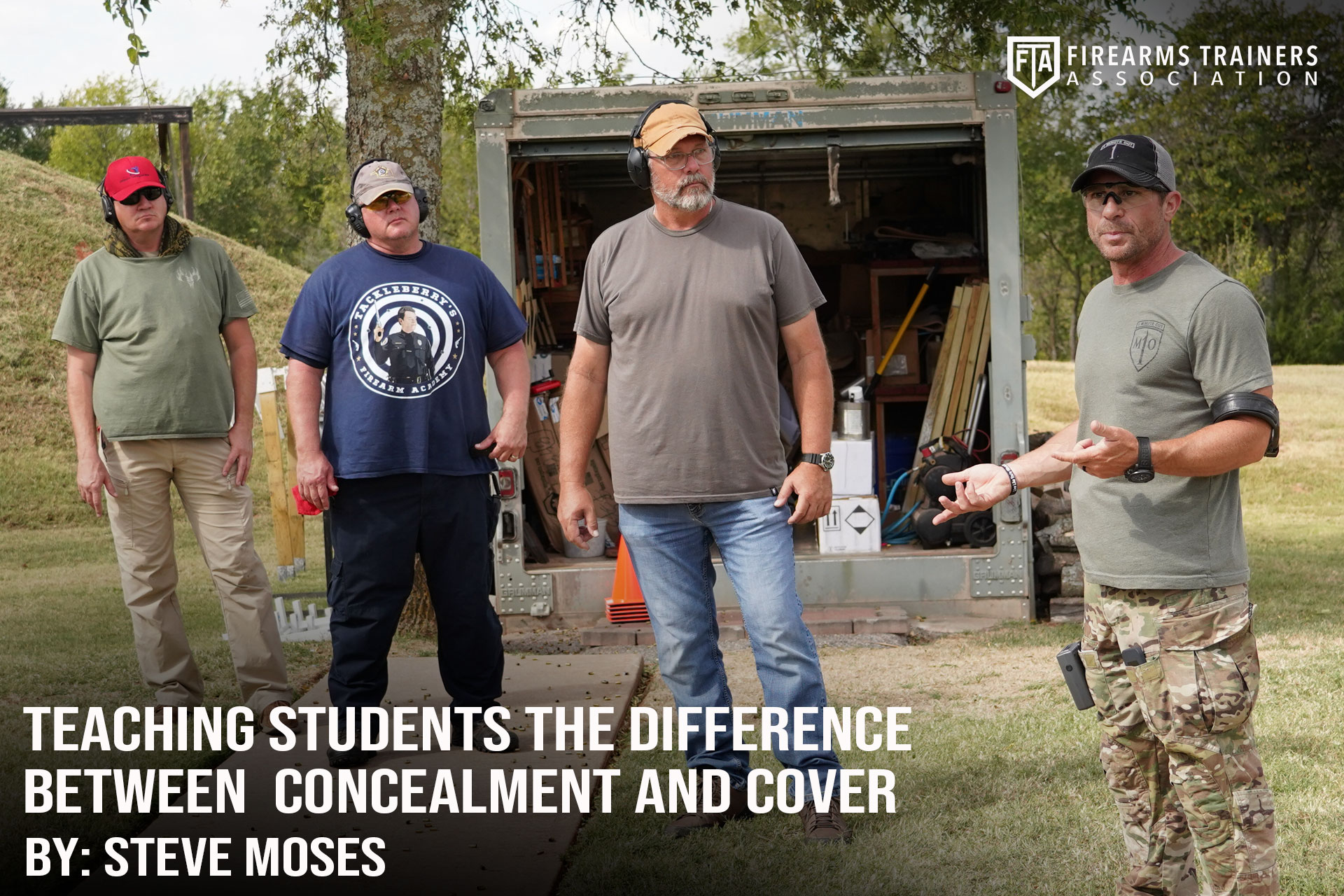
Posted on April 5, 2023 by Justin Collett in Steve Moses
TEACHING STUDENTS THE DIFFERENCE BETWEEN CONCEALMENT AND COVER
Many students have never been advised by a trainer to seek cover or taught how to properly use cover should they become caught up in a gunfight. It is important that students know that during the most common types of street crime seeking cover may not be possible, and there is actually not that much cover to be found inside of most modern-day homes and apartments.
Cover might be described as a barrier that will stop or deflect incoming rounds. Its effectiveness is dependent on the type of firearm being fired at the student and is a function of weight, velocity, and even construction of the incoming bullet. Materials that may stop an ordinary handgun round may not necessarily stop a high-velocity rifle round, shotgun slug, or even a load of buckshot fired from a shotgun.
Cover is more readily found outdoors in urban and suburban areas than it is inside of homes, apartments, and businesses. Examples of cover that may be found outdoors are large trees, concrete and brick pillars, corners of brick buildings, parking lot lampposts, and vehicle engines and axles. This is not the case during the majority of home intrusions/invasions Most interior walls consist of sheetrock sandwiched between wood or metal frames that are easily defeated by handgun, shotgun, and rifle rounds. The same may be true for the cabs and trunks of vehicles, although there are areas within the door panels that may stop handgun bullets. Students should be encouraged to take note of items in their residence that might actually serve as cover and then work them into their emergency action plans in the event they suddenly find themselves dealing with one or more armed intruders who have forced their way into their permanent or temporary residence or place where they work. They may discover that not only is there significantly less cover available than they thought but that it may be difficult to get behind and use effectively.
One thing that I am an advocate of is making sure that students understand that effectively using cover is more difficult than they may imagine. Most students will have a tendency to “hug” cover and get so close to the walls that their hands and firearms protrude well past the edge of the barrier while clearing a room or shooting. Students who do this are giving away their presence, and if someone shoots at them the incoming bullets may either strike their hands or forearm. In addition, an incoming round that misses the hands and forearm but strikes whatever the student is using for actual cover may “frag” upon impact and injure the students hands and forearms. Another downside to getting too close to cover is that it reduces the student’s peripheral vision and may allow an attacker to approach to them from their flank unseen. As always, there are exceptions to this rule, and one of them would be that the student is in danger of being engaged by a sniper shooting from an elevated position.
Students should know that the big difference between “cover” and “concealment” is that concealment is a vison barrier that can be used to hide their presence altogether or at least their current position. Concealment can be used to relocate to actual cover or perhaps break contact and escape. Another advantage through skilled use of cover is that it may allow the student to get into a position that they can see and shoot the attacker before the attacker can do the same to them. Skilled use of both cover and concealment includes understanding the principles of using distance, angle, and conformation of the body so that the student can remain largely out of sight of a potential threat while in a position to engage the other party.
In summary, students would likely benefit by understanding the definitions of concealment and cover, know the strengths and weaknesses of each, and how to properly use both. In the real world most interior walls in houses will not stop bullets, and getting too close to cover (or concealment for that matter) in a gunfight is always something to avoid. Being able to quickly pick up on pre-assault clues, honor that “gut feeling” that something out of the norm may be about to take place, and being prepared to quickly move to the closest point of legitimate cover is a critical skill.